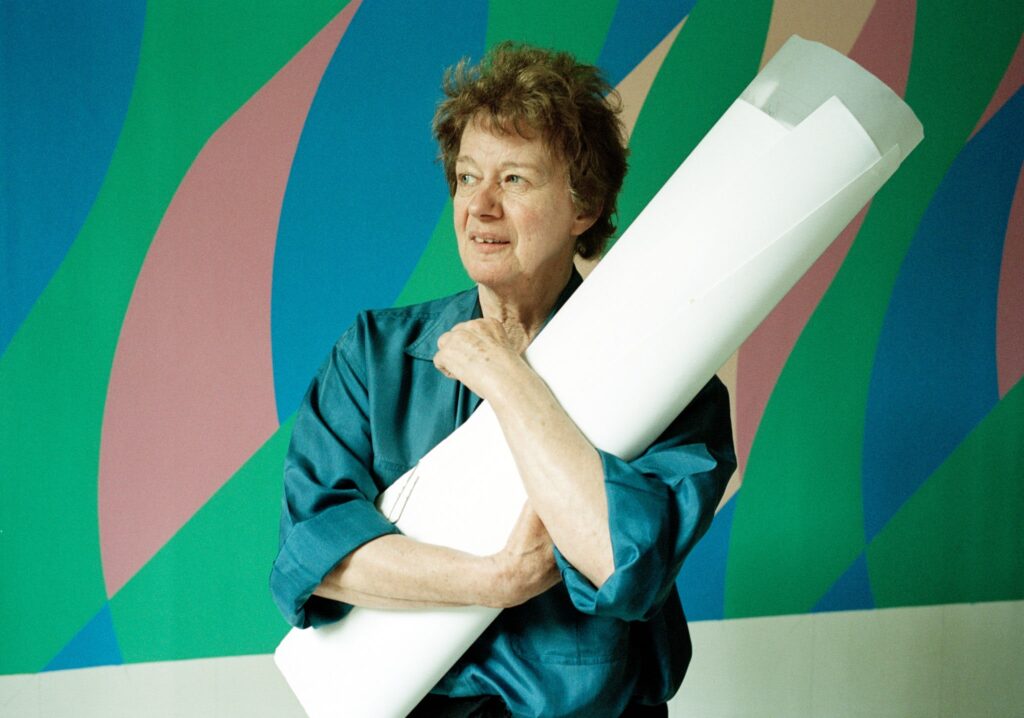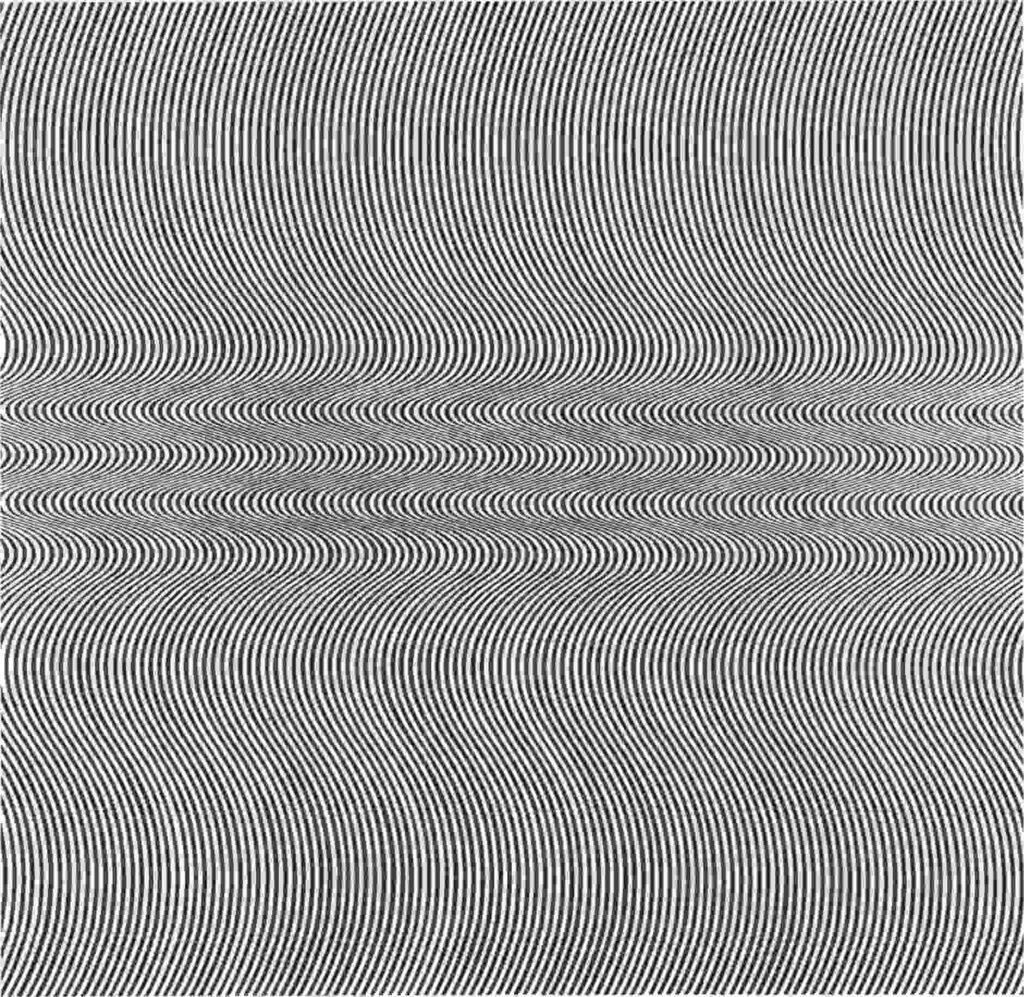Step into the mesmerizing world of Bridget Riley, where lines dance and colors sing in perfect harmony. Among her many captivating creations, “Fall” stands tall, a testament to her mastery of optical illusion and the power of art to bewitch the senses. In this article, we delve into the fascinating realm of Bridget Riley’s “Fall,” exploring its creation, its mesmerizing qualities, and the enduring legacy of one of the most influential artists of the 20th century.
Who was Bridget Riley?

Bridget Riley was a fascinating artist from the vibrant city of London. She was born in the year 1931. She had this incredible knack for playing with colors and shapes, turning them into mesmerizing works of art. Her journey into the world of art began when she enrolled in art school, where she had the privilege of learning from some of the most renowned artists of her time.
FUN FACT: Did you know that Bridget Riley was once a teacher? Before gaining widespread recognition as an artist, she taught art at various schools in London.
Her Career
Bridget Riley’s career was a colorful journey filled with experimentation and innovation. She was deeply fascinated by the interaction of colors and shapes, constantly exploring how they could create optical illusions that mesmerized viewers. Her artworks weren’t just paintings; they were gateways into captivating worlds where lines seemed to sway, and shapes danced before your very eyes.
As the swinging 1960s dawned, Bridget Riley burst onto the art scene with a bang. Her unique style, known as Op Art, short for Optical Art, grabbed everyone’s attention. Op Art was all about playing tricks on your eyes, making static images appear to move and pulsate with energy. People were blown away by Bridget Riley’s creations. They couldn’t believe that something as simple as paint on a canvas could have such a mind-bending effect.
What is Happening in “Fall”?

| Artist | Bridget Riley |
| Date Created | 1963 |
| Medium | Oil on Canvas |
| Genre | Op art |
| Period | 20th Century |
| Dimensions | 182.9 × 330.2 cm |
| Series/Versions | N/A |
| Where is it housed? | Private Collection |
In the pantheon of Riley’s masterpieces, “Fall” stands out as a testament to her mastery of optical illusion and her ability to captivate the viewer’s imagination. Created in 1963, “Fall” is a striking example of Op art at its finest.
At first glance, “Fall” appears as a simple composition of vertical black and white stripes cascading down the canvas. However, upon closer inspection, the seemingly static image comes to life, as the alternating bands of color create a dynamic sense of movement and depth. The carefully calibrated arrangement of lines produces a mesmerizing visual effect, causing the image to oscillate and pulsate before the viewer’s eyes.
Interesting Facts about “Fall”
Infinite Depth: Despite its seemingly simple composition, “Fall” creates an illusion of infinite depth, drawing the viewer into a hypnotic vortex of swirling motion. Riley’s meticulous attention to detail and precise manipulation of form and color are evident in every brushstroke, resulting in an image that defies conventional notions of space and perspective.
Endless Exploration: One of the most fascinating aspects of “Fall” is its ability to engage viewers on multiple levels. Whether viewed from afar or up close, the painting never fails to mesmerize, inviting viewers to explore its intricate patterns and subtle nuances. Each viewing offers a new perspective, as the image continuously evolves and morphs before the viewer’s eyes.
Universal Appeal: Despite being created over half a century ago, “Fall” remains as relevant and captivating as ever. Its timeless appeal transcends cultural and generational boundaries, captivating audiences around the world with its mesmerizing beauty and hypnotic allure.
Frequently Asked Questions
Why is Bridget Riley so important?
Riley rose to fame in the 1960s as a representative of both Op art and modern British painting, and in 1968 she became the first female winner of the painting prize at the Venice Biennale. Richard Allen and Richard Anuszkiewicz were among the wave of Op artists who drew inspiration from Riley’s artistic breakthroughs.
What techniques does Bridget Riley use?
To achieve visual rhythm in her paintings, Bridget Riley employs geometric shapes, lines, and colors. Her distinctive style is characterized by recurring patterns that create optical illusions and draw the viewer’s eye across the canvas.
Conclusion
Bridget Riley’s “Fall” is not just a painting; it’s a visual symphony that dances before the viewer’s eyes, inviting them on a journey of exploration and discovery. With its mesmerizing optical effects and timeless beauty, “Fall” continues to captivate audiences and inspire wonder, proving once again the enduring power of art to transcend the boundaries of perception and imagination.













